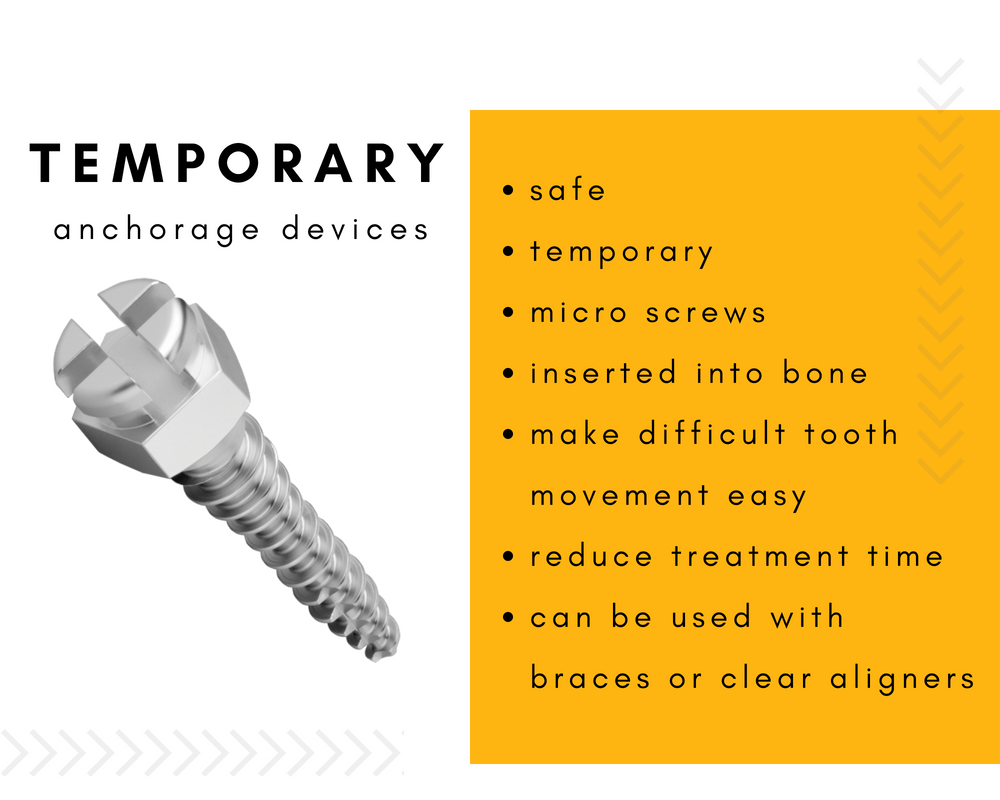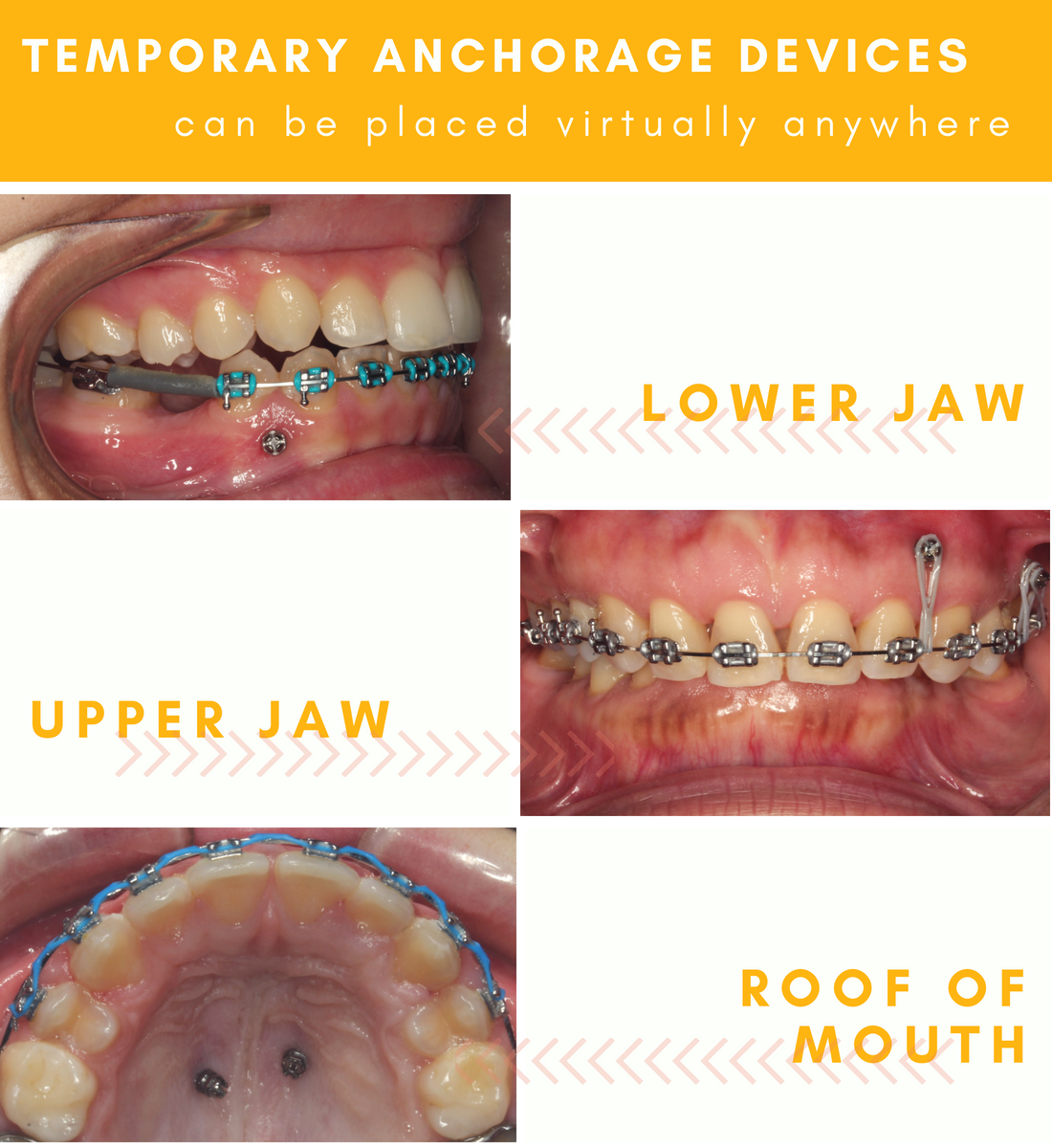Treatments
Temporary anchorage devices (TADs), also known as micro-screws or micro-implants, are one of the ways that Hometown Orthodontics provides the most cutting edge treatment options to patients. When used appropriately, TADs can reduced treatment complexity and treatment time, reduce the need for expensive dental work, and in certain cases, may also provide a non-surgical alternative for those patients who would otherwise require surgical correction. Dr. Virdee is trained in the most progressive techniques for TAD placement and only uses an evidence-based approach (treatment that is backed by science) to use this technology. Our goal is to use innovations in orthodontics safely so you can LIVE, LAUGH, SMILE everyday.
What are TADs?
TAD are made of titanium alloy and range in size from 6 to 10 millimetres in length and 1.2 to 2 millimetres in diameter (approximately the size of a small stud earing). They act as anchors and help to make difficult tooth movement more predictable and efficient, thereby reducing overall treatment time. TADs can be used in conjunction with braces or as an alternative to headgear. Dr. Virdee is also proficient in using TADs in patients who prefer Invisalign, making an otherwise difficult Invisalign case much simpler.

How and where are TADs placed?
Placement of TADs is minimally invasive and usually takes approximately 5 minutes. Dr. Virdee follows the most advanced and scientifically accepted protocols for TAD placement, inserting most TADs manually with gentle pressure without the use of drills. Because local anaesthesia is used to numb a small area of your gum where the TAD is gently inserted, the procedure is virtually painless. The most common places for TAD insertion are between the roots of the teeth or in the roof of the mouth.
How long will the TAD stay in place?
The duration of time that a TAD is left in place will be determined by Dr. Virdee. In most cases, TADs are only required for a few months but may be needed for the entire length of orthodontic treatment to achieve the desired results. When they are no longer needed, TADs are easily removed, usually without the need for local anaesthesia and the TAD site heals painlessly within several days after removal.
Care for your TADS
>
Caring for your TADs is similar to caring for your braces. A small toothbrush can be used to clean around the top of the TAD. Electric toothbrushes should be avoided on the TAD itself. The majority of TADs remain very stable during orthodontic treatment and cause little to no nuisance at all. Occasionally, they can become loose prematurely. This is rarely painful, but you may need a replacement in this case. If you feel discomfort for any reason, please do not hesitate to call.
Get a Free Consultation
A faster, less invasive way to straighter teeth. Find out if you are a candidate for TADs. Call us today.




